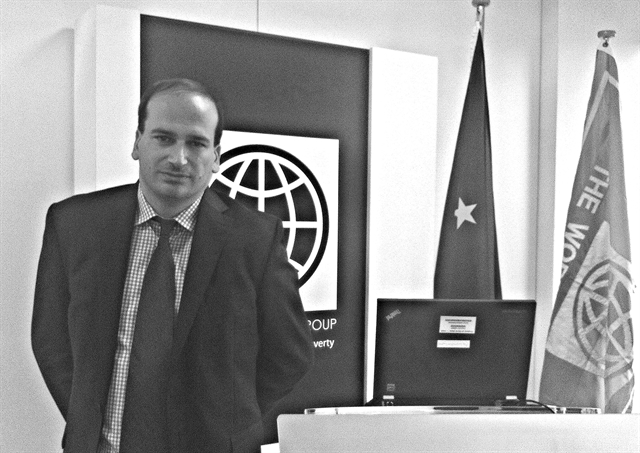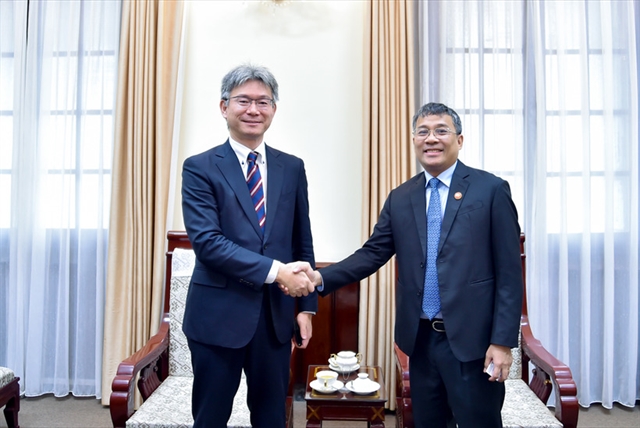 Society
Society

 |
| UNDP Chief Economist for Asia Pacific Philip Schellekens. — VNA/VNS Photo |
HÀ NỘI — The 2024 Asia-Pacific Human Development Report, launched on November 6, paints a picture of long-term progress, but also persistent disparity and widespread disruption, foreseeing a turbulent development landscape and urgently calling for new directions to boost human development.
Vietnam News Agency discusses the report with Philip Schellekens, UNDP Chief Economist for Asia and the Pacific for further details.
What are the key findings of this report and what's different from previous findings?
The 2024 Regional Human Development Report for Asia and the Pacific calls for a ‘reset’ in development strategy. It is high time that we do so, not only because the unfinished human development agenda in the region is large.
Indeed, while the region has long held a reputation as a strong performer in human development, a deeper look reveals stubborn disparities, with millions being left behind. Consider for example the 500 million people deprived of basic education, health or living standards, the 800 million women out of the labour force, or the 1.3 billion people living precarious lives in the informal sector. Also, the region is not on track to achieve any of the SDGs by 2030.
But also because the region faces a potentially far more turbulent future, which left unchecked could amplify existing disparities and could continue to cause widespread disruption. The region stands at a crossroads where three major risk clusters converge. First, the existential threats stemming from climate change and future pandemics, amplified by urbanisation. Second, the disruptions to established drivers of growth and job creation, at a time of new trends in globalisation amid intense demographic and technological change. Third, the threats to the momentum of change resulting from democratic backsliding, rising populism and polarisation.
The 2024 Regional Human Development Report presents three new directions that should address the large development backlog and prepare countries better for the turbulent future: (1) put people at the heart of any development strategy, to enlarge opportunity, reduce human insecurity, and meet the needs of future generations, (2) recalibrate growth strategy, to sustain fast-enough growth while ensuring it is growth of the right kind (more job creating, more respectful to the environment), and (3) make change happen, to turn new ideas into practice through an unrelenting focus on the political economy of reform and the effectiveness of government delivery.
The previous RHDR dates to 2016 and was focused more narrowly on the topic of demographics. Asides from providing an updated picture of the state of human development, the 2024 RHDR is a bigger-picture think piece on how the region can navigate the turbulence ahead of us. It lays out a comprehensive agenda for change, where the value-add lies in the integration of the three directions it advocates for.
Does the report identify any specific risks facing Việt Nam with regards to human development? If so, what is your assessment of Việt Nam's capability to deal with those challenges?
No country in the region is adequately prepared to meet the challenges of the future, marked by existential threats, risks to growth and job creation, and risks to the momentum of reform. Việt Nam is no exception to this.
Looking ahead, progress will hinge on Việt Nam's capability to anticipate changes in the development landscape and stay ahead of the curve by adapting development strategies to these changes and implementing them with agility across the whole of government. These are the hallmarks of AAAG – anticipatory, adaptable and agile governance – a concept coined by UNDP Việt Nam a few years ago, partly in recognition of Việt Nam's past accomplishments in this sphere.
Consider how these ideas apply to one critical risk to human development: the headwinds to growth and job creation.
The headwinds we are facing arise from multiple factors, many of which originate outside Việt Nam's immediate control. The landscape of globalisation is shifting, moving away from a highly supportive period of rapid international integration to a more restrained phase characterised by a slowing of cross-border production networking and increasing geopolitical tensions. At the same time, the swift spread of innovative technologies worldwide is transforming the nature of production — its demand for labour and the very factors that determine a nation's competitive edge. For Việt Nam to thrive in this new environment, it needs to adapt.
But the headwinds are also internal. As is the case for any other country, the process of climbing up the income ladder means that the drivers of growth change from accumulation-based models to approaches that are attuned to innovation. The notion of a ‘middle-income trap’ is a mislabel for Việt Nam; what the country actually confronts is a policy challenge to shift gears and adapt with agility. The real test lies in avoiding that the country entrenches itself in low-value-adding assembly and processing activities, and instead continues the process of moving up the value chain through constant innovation and improvement.
What would be your recommendations for Việt Nam to advance its human development?
The report highlights three directions that are promising for human development amidst today’s turbulent times: people first, smart growth and bold action to drive change. These strategies are complementary rather than hierarchical; an integrated application of all three is the optimal path forward.
But what does this mean more concretely for Việt Nam?
A people-first approach is crucial. With high levels of job insecurity reported by Vietnamese people (the World Values Survey indicates 80 per cent is worried about losing their job), expanding opportunities through capability building is critical. This not only helps create jobs but also must go hand in hand with strengthening social protection systems to shield citizens from the anticipated upheaval. This overall approach also includes initiatives for a fair energy transition, achieving carbon neutrality, conserving nature, and fostering risk-resilient development to support future generations.
Smarter growth is also necessary. While export-led growth is still a viable option, Việt Nam needs to target rapidly expanding markets more aggressively and enhance its competitive edge to increase its share of value chain income. Domestic market integration and subnational specialisation could further enhance growth dividends.
Việt Nam must also be proactive in 'making change happen'. This means maintaining the flexibility to continuously refine its development strategies in response to shifting landscapes. Given the likely turbulence ahead of us, the ability to adapt and be agile positions a nation to turn disruption into opportunity. Recommendations include fostering forward-thinking and scenario planning, encouraging learning and unlearning to adopt new methods, and improving inter-agency cooperation within the government. — VNS




